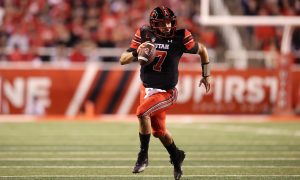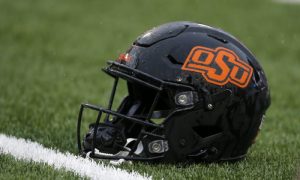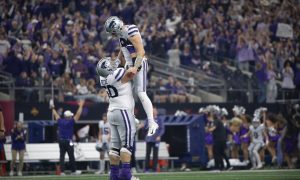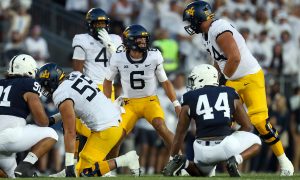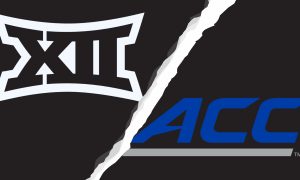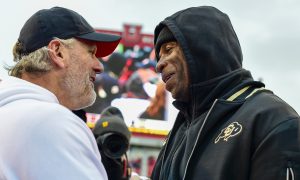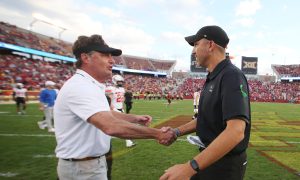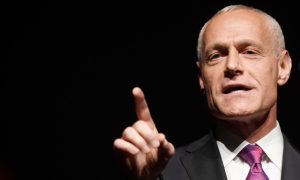Postscripts: Utah’s Facepalm, Big 12 Basketball Season Approaches and Coaching Questions
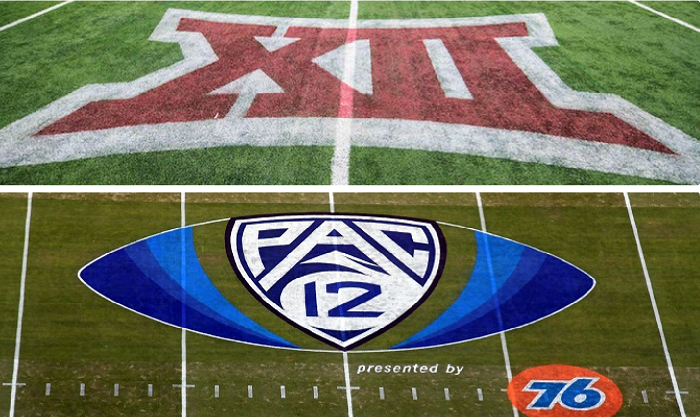
What’s going on in the Big 12 and beyond? I expand and explain every Sunday in Postscripts at Heartland College Sports, your home for independent Big 12 coverage.
This week, Utah is the villain, time to start getting ready for Big 12 basketball and another example of football coaches doing questionable things in key situations because data tells them to do so.
Utah For the Loss
For the past few months many of us have asked this question: Who was the Pac-12 university president and professor that believed that the league could get $50 million per team per year in its new television contract?
I honestly wasn’t sure we would ever find out because who would want to be connected to that embarrassing bit of information?
Well, John Canzano, who took a lot of heat from Big 12 fans in the last year for what Big 12 fans considered ‘homerish’ reporting of the Pac-12, got the scoop on Friday.
Gotta be honest — I did not have Utah’s president on my bingo card.
Yep, Canzano learned that Utah president Taylor Randall was foremost among those pushing the league to pursue that kind of a TV deal. If you read the report, he wasn’t the only one pushing for a bigger deal, and he wasn’t the only one working with outside consultants. Randall acknowledged that.
But Canzano’s reporting revealed that Randall was the most vociferous and was the one with the “professor.”
If Utah seems like the most lukewarm of the four new Big 12 schools, well now you know why.
Canzano’s reporting revealed a Pac-12 group that was utterly obtuse, given their circumstances. The reported offer from ESPN and the subsequent “counter-offer” makes them all look like they checked logic at the door.
I’ve written it here before, but let’s review.
The Pac-12’s current television deal pays each team $20 million a year. That is with USC and UCLA and the nation’s No. 2 television market, Los Angeles. Once UCLA and USC decided to leave for the Big Ten, and take the L.A. market with them, that should have been a clue to all of them that recouping that value would be difficult, especially since they weren’t pursuing expansion before the TV contract.
ESPN offered them an all-in deal worth $30 million per year per team for the 10 of them. Basic math tells us that’s a 33 percent raise. In this inflationary economy, that’s a raise anyone would take.
Not the Pac-12. With Utah’s valuation in tow, along with others, the Pac-12 countered with $50 million.
Utterly ridiculous, especially when Canzano’s reporting revealed that the Pac-12 saw their $50 million ask as a “starting point.”
A “starting point?” No, that’s a $20 million gap and an open invitation for ESPN to say, “See ya.” Which they did and gave the money to the Big 12.
Frankly, given this, Utah should be thankful for the Big 12 invite, as the pro rata that commissioner Brett Yormark negotiated will net the Utes a TV a raise of $11.7 million per year. So Utah’s getting paid anyway.
For a year I’ve been telling people that USC, UCLA and the Big Ten killed the Pac-12. You can add Utah to the list.
For that reason, the Big 12’s current members should put Utah in the penalty box for a bit once they join the league. They’ve worked too hard to create harmony to let any program screw this up.
Big 12 Basketball Preview
The 2023-24 Big 12 basketball season will be here before you know. We’re just a month away from season openers and less than two weeks away from Big 12 Media Days in Kansas City, where you’ll find myself and Joe Tillery for two days (so stop by and say hello).
I know everyone is focused on football but I’m paying attention to basketball for you, and each week here in Postscripts I’ll link to all of our preview material for the next season in the best basketball conference in the country.
Men’s Roster Previews: Baylor | BYU | UCF | Cincinnati | Houston | Iowa State | Kansas | Kansas State | Oklahoma | Oklahoma State |
Women’s Roster Previews: Baylor | BYU | UCF | Cincinnati | Houston | Iowa State | Kansas | Kansas State | Oklahoma | Oklahoma State |
So, About The Other Night …
Sometimes I believe coaches can out-think themselves during games. Or, in this age of analytics, they become beholden to charts, graphs and formulas. I saw that a couple of different times during Friday’s game between Kansas State and Oklahoma State.
Kansas State had cut Oklahoma State’s lead to eight points after a Will Howard touchdown run in the fourth quarter and was faced with the decision to go for one or go for two. Wildcats coach Chris Klieman decided to go for two and ESPN spent three minutes trying to explain why the math worked. KSU didn’t get the two, by the way.
I don’t care about the math. Being down seven or down eight you’re still down one score. So why not kick the extra point and not force your team to have to go for two AGAIN just to tie if you’re able to score another touchdown? To me, you’re making things harder on yourself.
On the next drive, Oklahoma State coach Mike Gundy blundered his way through a fourth-and-one, which was really closer to fourth-and-two.
OSU drove to the KSU 40 and I expected Gundy to punt. This way, you pin KSU inside its 20-yard-line and force them to drive the length of the field to tie you. Remember, it’s an eight-point game. Worst that can happen is you’re tied.
Gundy, instead, took a time out.
Then, instead of punting, he had his offense go for it, giving the KSU defense a full timeout to set its defense and prepare for what was coming. Obviously, OSU failed to convert.
So, Gundy saved Klieman and his offense time and gave them at least 20 yards in field position. He put his defense — which was rock-solid the entire game — in a bad position.
Fortunately, the OSU defense stepped up and picked off Howard for the third time to end the game.
I’m not against using data and analytics to make decisions. I do that all day at work. But there are times when the sound football decision runs against that data and the coach, in my opinion, should just put the data in their back pocket and make the sound football decision.
I watched Klieman and Gundy struggle with that on Friday. But they’re not the only ones.
Will Big 12 Count to 20 (Conference Games)?
Earlier this week, College Hoops Today’s Jon Rothstein reported that the Big 12 is considering 20 conference games for basketball starting in 2024-25 when it expands to 16 teams.
There’s a good reason for that, and it’s not because of conference expansion. It’s the loss of the Big 12-SEC Challenge.
The Big 12 had looked at their Big 12-SEC game and their Big EAST Battle game as de facto league games, as they help them in NCAA Net and KenPom ratings. The other major conferences play 20 league games. But the Big 12 felt those two games helped them from a rating perspective (and they weren’t wrong) and, with 18 league games in the double round-robin, they needed it.
Now? Well, the SEC is now engaged in an ACC contract and, while the Big 12 still has its Big EAST Battle, they lose that de facto 20th league game.
Going to 20 next season makes sense. It puts you on the same footing with the other high-majors, you can continue your contract with the Big EAST and — I fully believe this will happen at some point — engage in some kind of challenge with the Big Ten, especially once Fox has access to Big 12 basketball games in the new television deal.
My belief is the Big 12 will eventually land on 20. But it gives me a question to ask Yormark at Big 12 Media Days, one he will likely provide a non-answer to (at least for now).
You can find Matthew Postins on Twitter @PostinsPostcard.

